"Old Bricks - history at your feet"
Wales

Any additional information you may have on any Welsh bricks below
is most welcome.
Welsh bricks - letters A to C
Also check the Buckley, Wrexham,
Ruabon and North East Wales pages above where there are
many more North Wales made bricks
Letter A
Aberaman
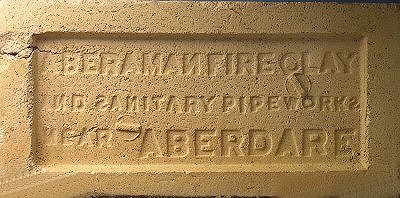
Aberaman Ironworks was built in 1845 in the Cynon Valley by the
great ironmaster Crawshaw Bailey, the brickworks forming part of
the inventory. The ironworks closed in 1866, and in 1867 the
entire concern, including the brick works, was bought by the
Powell Duffryn Steam Coal Co, thanks to Lawrence Skuse for the
info.
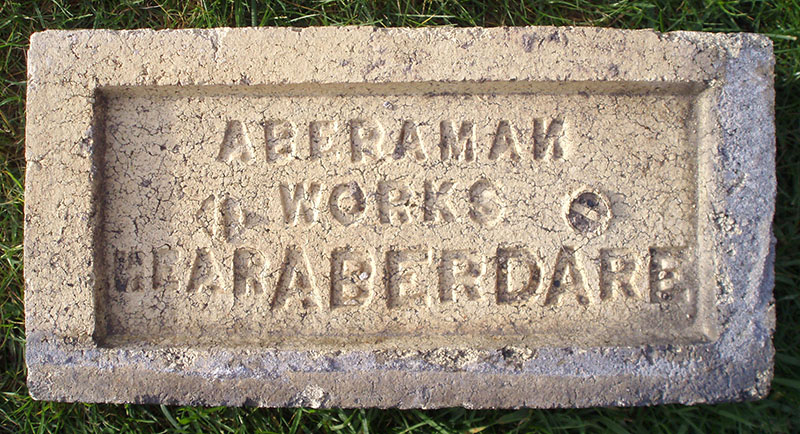
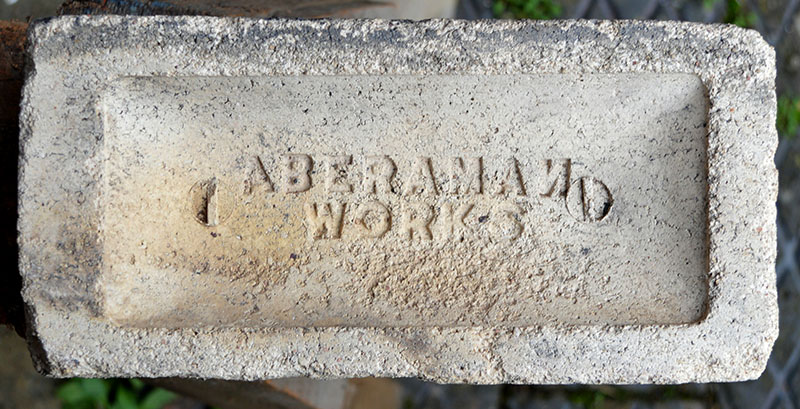
Photos by Frank Lawson.
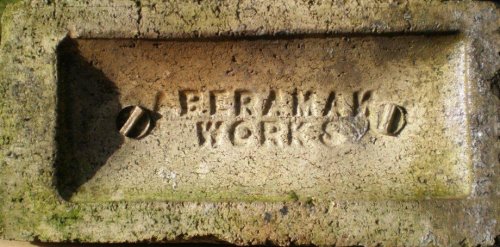
Photo by Richard Paterson who adds: After nationalisation of
the coal industry in 1946, many of the previous owners, such as
Powell Dyffryn, restructured or diversified, often selling or
closing activities ancillary to coal mining, like brickworks.
However, the Aberaman Works was still operating in October 1964.
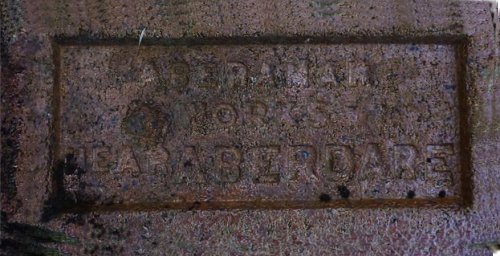
Photo by Gareth Thomas
Aberdare Brick Company
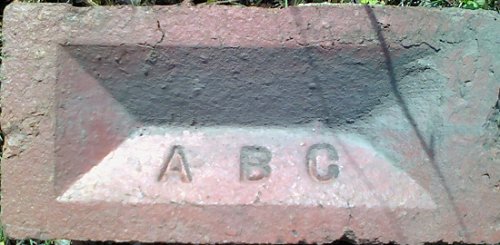
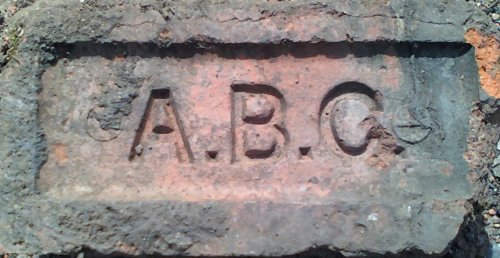
Thanks to 'Brotherglyn' for these Aberdare ones.
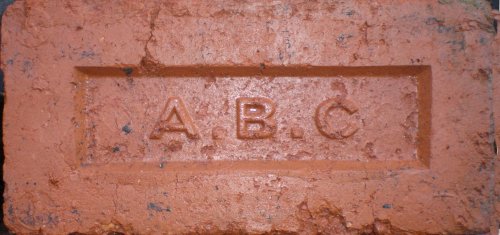
the Tanybryn brickworks (see separate entry) at Llwydcoed, near
Aberdare, was established in 1906 on the site of the former
Llwydcoed Ironworks, which had closed in 1875. Eventually the
brickworks became the Aberdare Brick Company and had a number of
owners, probably including Powell Duffryn, who owned the Aberaman
brickworks, some three miles down the Cynon Valley. The ABC works
closed in December 1981 and the extensive site is now (January
2014) being turned over to housing. Photo and info by
Richard Paterson.
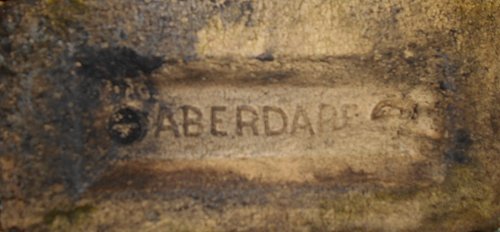
Photo by Grant Avon
Abernant

Abernant Brickworks in the Neath Valley from Roy Bowen.
Abersychan
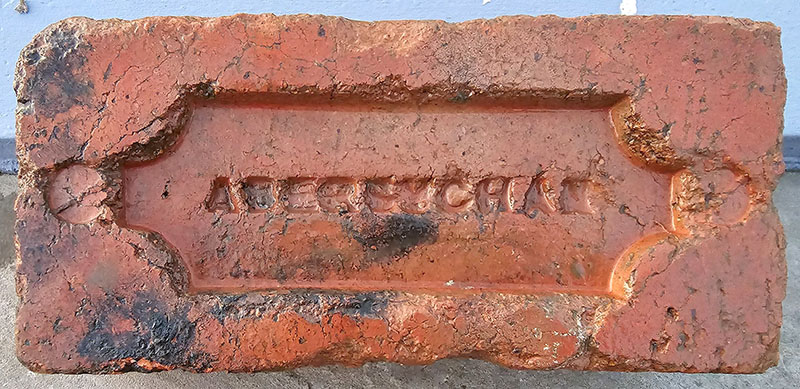
Photo by Cath Thomas.
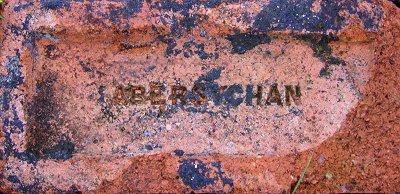
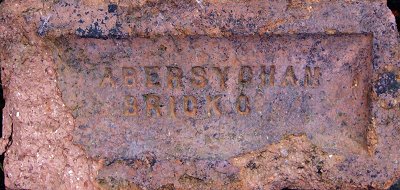
Abersychan is near Pontypool in South Wales. There is an
entry in Kelly's for 1906 listing 'J Gregory of Pentwyn,
Abersychan (see Gregory J). In the same year he is also listed
as manufacturing fire bricks. In 1926, Kelly's lists the
'Abersychan Brick Co of Pentwyn, Abersychan'. In 1948, the
Industrial Directory for Wales and Monmouthshire (IDWM) names
the 'Abersychan Brick & Slag Co', but in the 1960 IDWM, the
'Abersychan Slag Ballast Co' appears. The last record for this
company is in the IDWM for 1964, thanks to Lawrence Skuse for
the info.
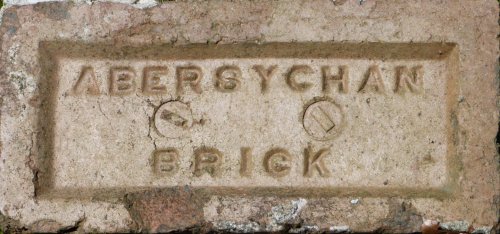
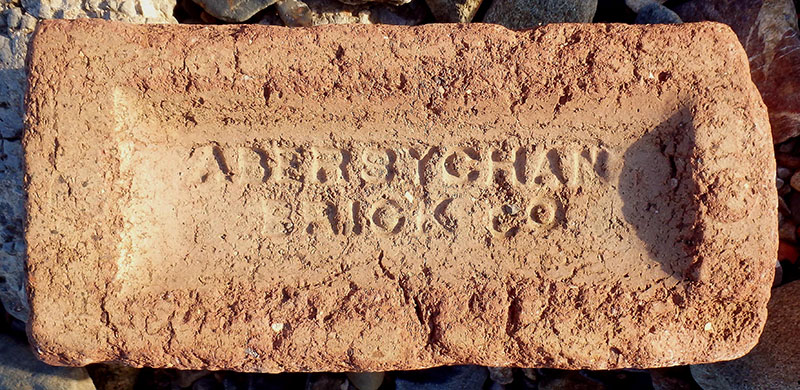
Photo by Frank Lawson.
Allen No 1
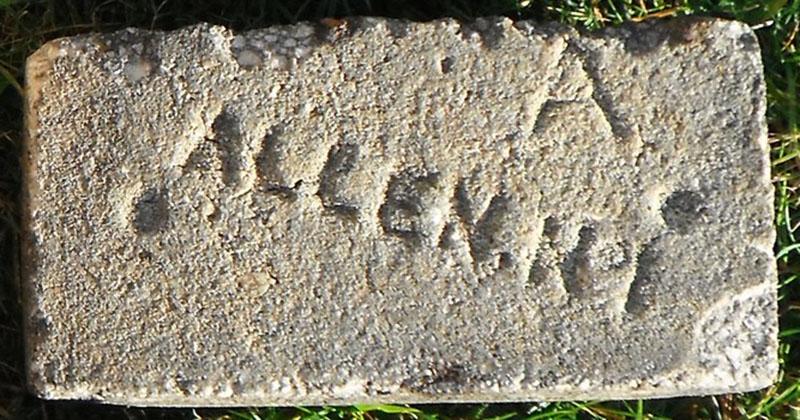
Photo by Ian Suddaby.
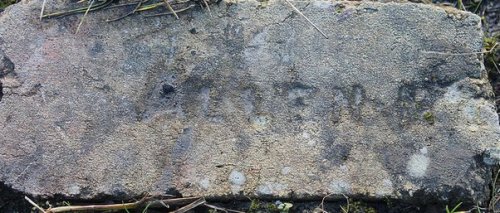
The firm was founded in 1853 as Allen & Younger and became N B
Allen in 1871. According to Nansi Selwood's excellent 'History of
the Villages of Hirwaun and Rhigos', the firm made bricks from
silica brought via a dedicated mineral line from two quarries, Yr
Eithin and Y Foel, in Penderyn. The bricks were reputedly of high
quality and won a prize at the 1880 Paris Exhibition, though a
flourishing export trade ended with the outbreak of WW1 as the
bricks were required for use on the home front. I remember 'the
Quarry Line' being in use and I know that, eventually, Allens were
taken over by General Refractories, later GR Stein, before closure
in 1973. Photo by Michael Kilner, taken adjacent to the
Blaen Pig waste tips, at Pwll Du, Blaenavon. Info by Mike
Stokes and Richard Paterson.
Alteryn / Altyryn
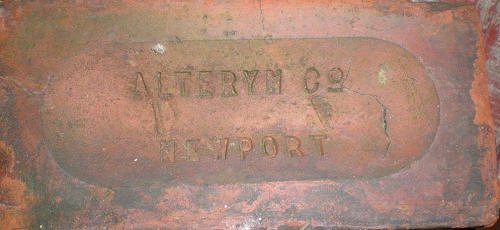
The variously spelt Allt-yr-yn works was previously operated by
Davies & Co and latterly part of the National Star Group. The
London Gazette records that the 'New Alteryn Company' was put into
voluntary liquidation in 1931, presumably as a result of the
acquisition of the works by the Star Group. This brick was
photographed at the Fourteen Locks Canal Centre near
Newport.
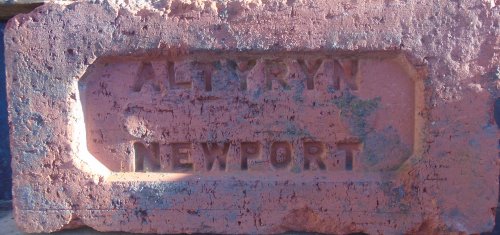
Photos and information by Richard Paterson.
Amman
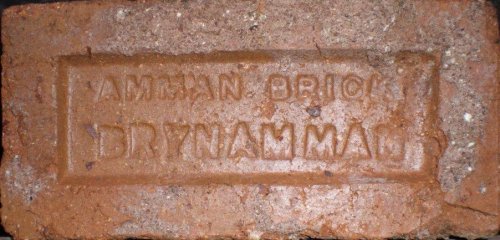
The Amman Brick Co, of Brynamman, near Ammanford in
Carmarthenshire. The company was in existence up until about 1926.
Photo and info by Richard Paterson.
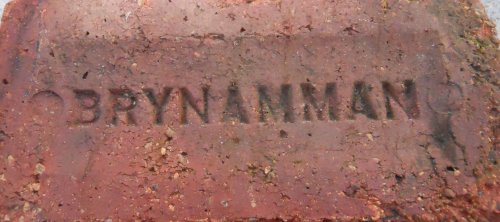
Photo by Tony Gosling.
Ammanford Colliery
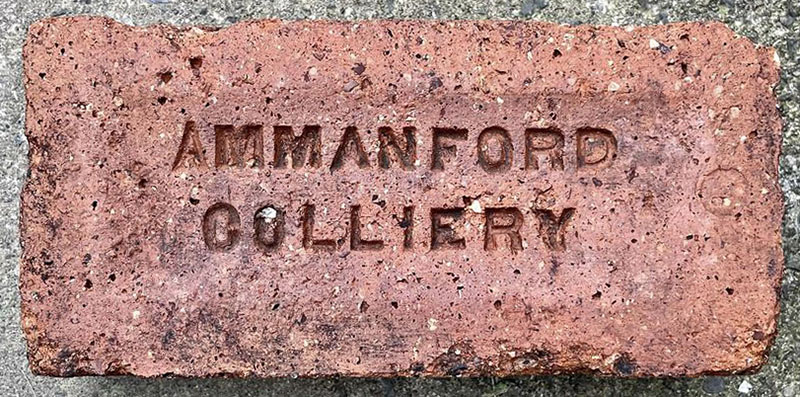
This colliery closed in 1976, read its history here. Photo by Phil Burgoyne.
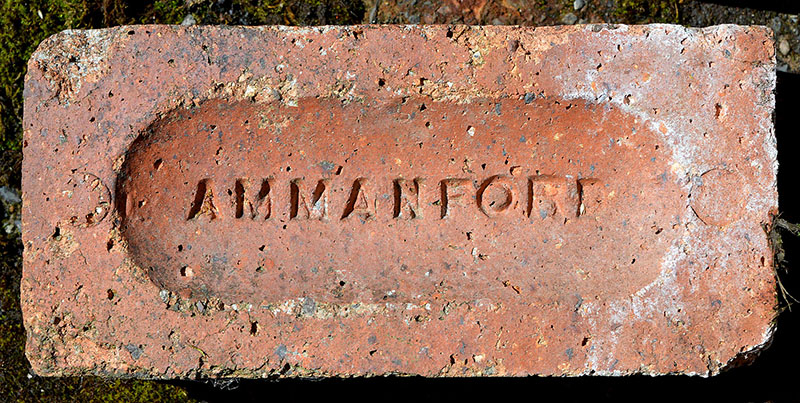
Photo by Frank Lawson.
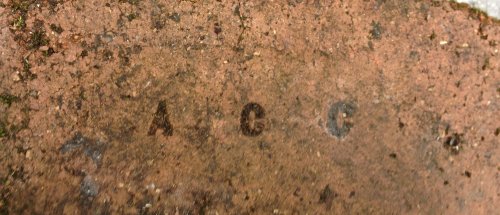
Found by Geraint daniels in Trebanos.
Angle
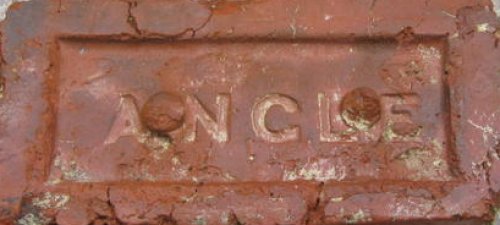
A Pembrokeshire brick, thanks to Mike Bennett for the photo.
Argoed -
Hudson Argoed
Arkell, Cadoxton
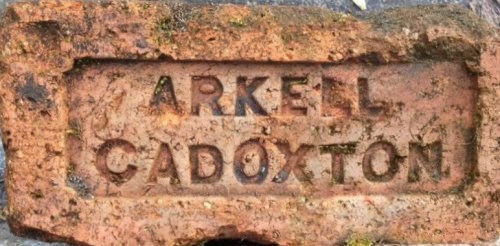
Barry Docks was opened in 1889 and soon became the world's largest
coal exporting port. The population of Barry rose from 1,000 to
30,000 in the space of a few years and Arkell's Brickworks, in the
neighbouring village of Cadoxton, was one of the beneficiaries of
the resulting building boom. The works was established by
Henry Arkell (1838 - 1902), originally from Gloucester, who had
previously been a shoe merchant in Penarth and then kept the
Windsor Hotel in Cardiff. After Henry's death, the works was owned
by his wife, Caroline, and managed by his son, Herbert - it was
still operating in 1916. Photo and info by Richard Paterson.
Arvon

Photo by Sam Burrows.
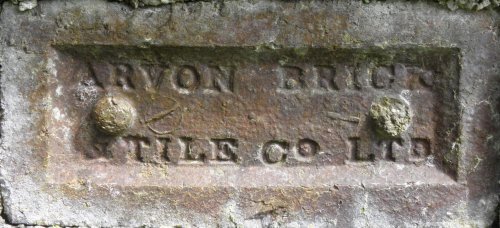
Photographed in Corris, Powys. Arvon Brick & Tile Co Ltd, Peblig Brickworks, Caernarvon.
Letter B
B A C Tredegar
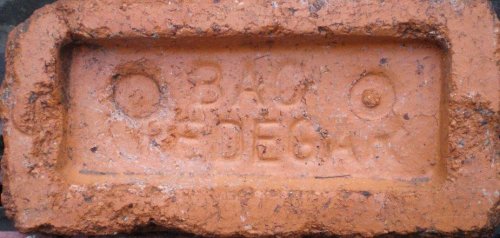
B A C stands for British Anthracite Company, an N C B subsidiary.
Photo and info by Richard Paterson
Beaufort
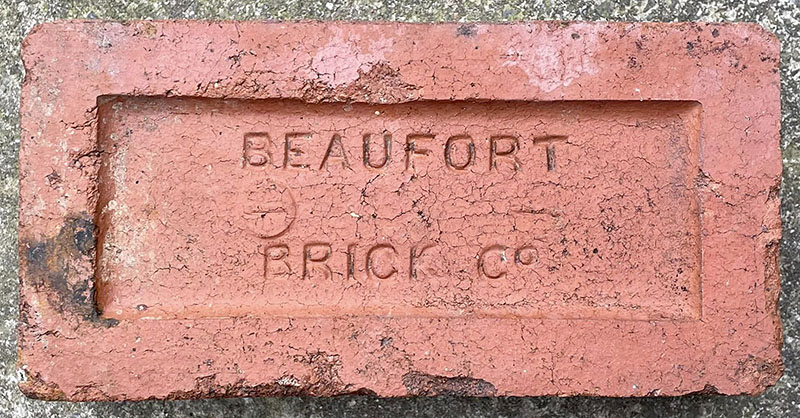
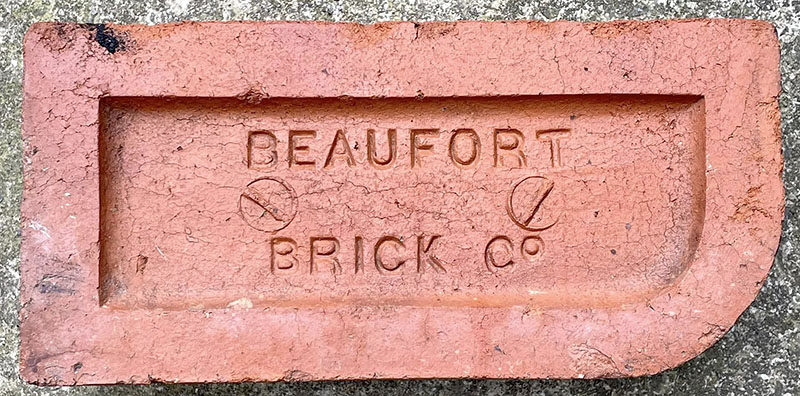
Beaufort is a small village near
Ebbw Vale. Famous for very hard engineering bricks. The
Empire State Building in New York is allegedly built on a
foundation of these bricks. Thanks to Lawrence Skuse for
the info. Photos by Phil Burgoyne.
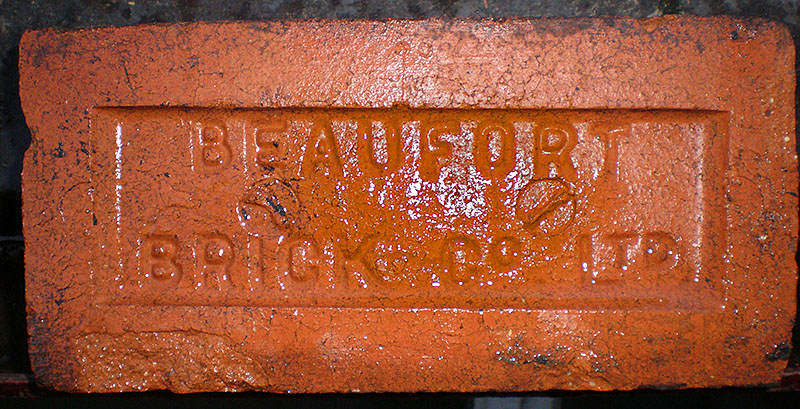
.jpg)
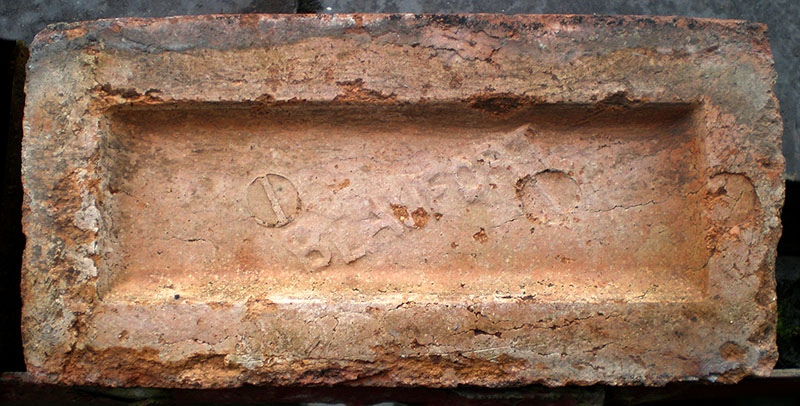
Photos by Richard Paterson
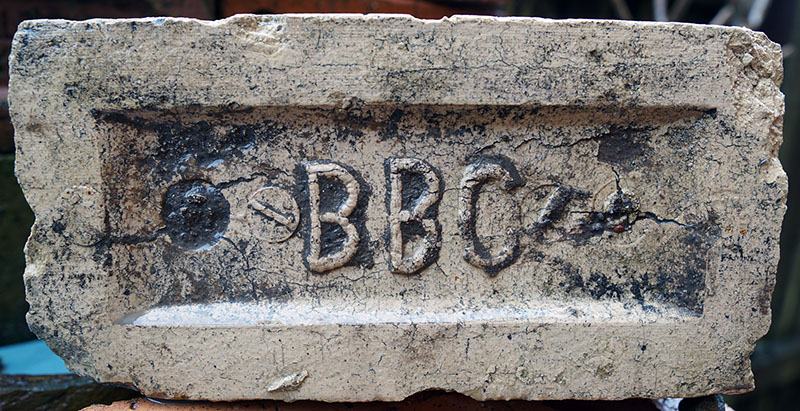
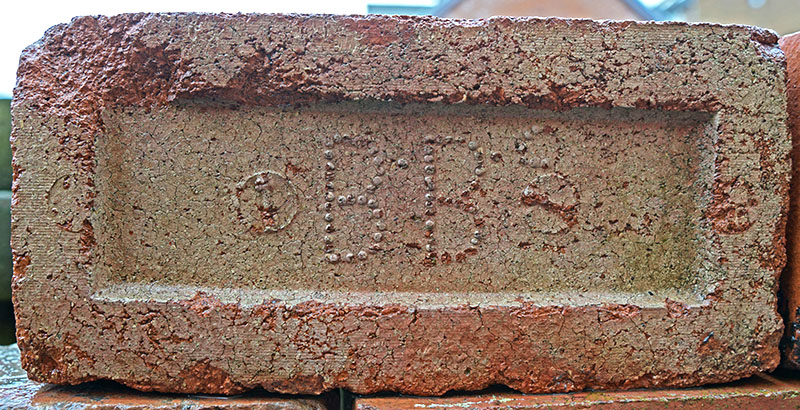
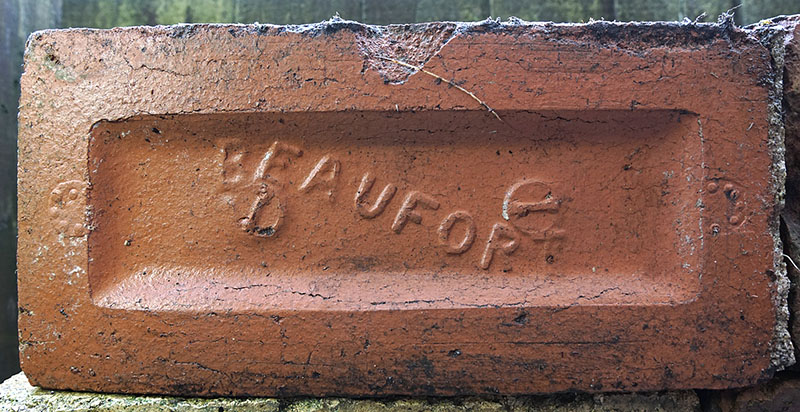
Photos by David Hernon.
J E B - J E Billups
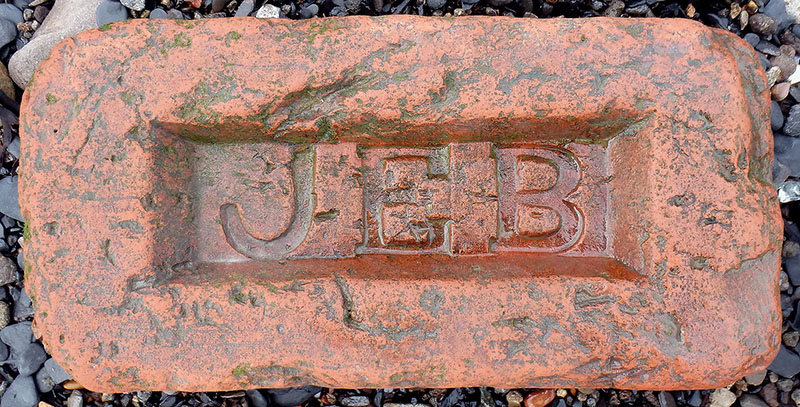
Jonathan Edwin Billups, Llandough, Cardiff. Kelly's South
Wales Directory 1895. Jonathan Edwin Billups was born on 21
September 1827, in Charteris, Cambridgeshire. He came to Cardiff,
via Llanelly, in 1856-7, and soon became the principal contractor
for the Taff Railway Company. He founded the Llandough brickworks
on Penarth Road (later, Billups Brick Co. Ltd), was proprietor of
the Cambrian Engine Works at West Bute Dock, and undertook large
contracts building railways in Sweden. He also built the Dowlais
ironworks, East Moors, Cardiff, and the dry dock for the Bute
Shipbuilding Company. Photo and info by courtesy of the Frank
Lawson collection.
Bishpool
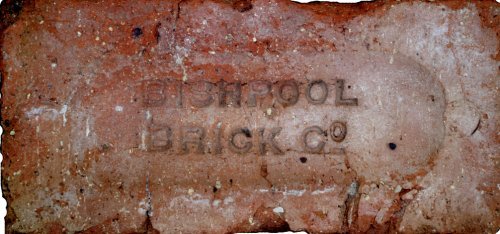
Photo by Mike Stokes, believed to be Bishpool Brick Co. Bishpool
Brickworks, Chepstow Road Newport, opened c. 1886.
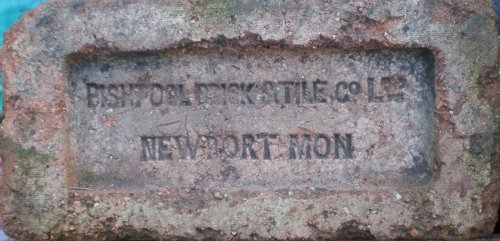
Photo by Richard Paterson.
Blaendare
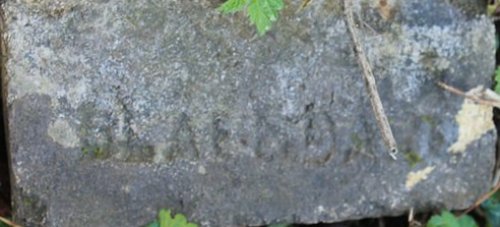
Blaendare brick works stood where Blaendare Road joins The
Race, in Pontypool. This was an industrial site dating back to
the early 18th century, with, at various times, an ironworks,
coke ovens, a brick works and a drift colliery which operated
until 1948. A house built for the site manager in 1810 from
white bricks made at the works still stands overlooking where
the brick works was located. Slater's Directory for 1868 lists
'The Blaendare Co Ltd, Pontypool. Kelly's of 1871 lists the
'Blaendare Colliery Co, The Race, Pontypool. The last
reference to it is in Kelly's of 1906. 'Special Report on the
Mineral Resources of Great Britain', HMSO, 1920, quotes The
Blaendare Co as situated on Blaendare Slope, Upper Race,1 mile
south west of Pontypool. Photo by Michael Kilner, info
by Lawrence Skuse.
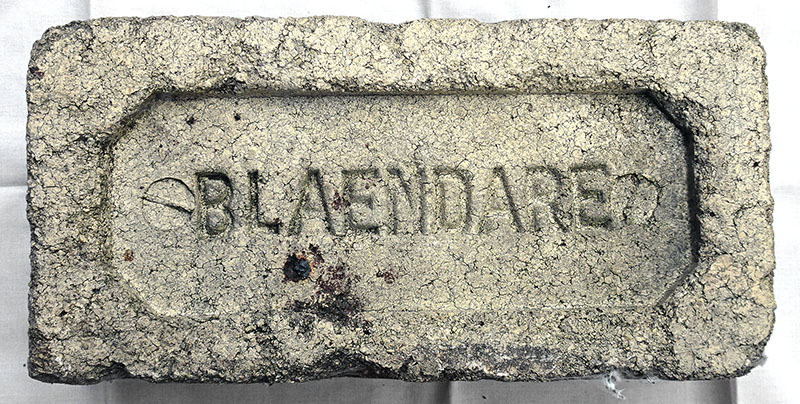
Photo by Lawrence Skuse.
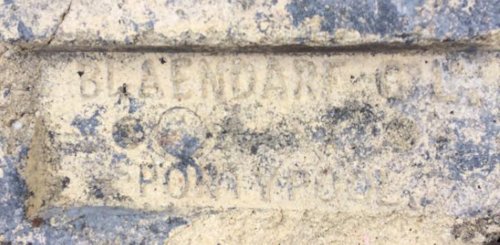
Photo courtesy of Gareth Thomas.
Booker & Co
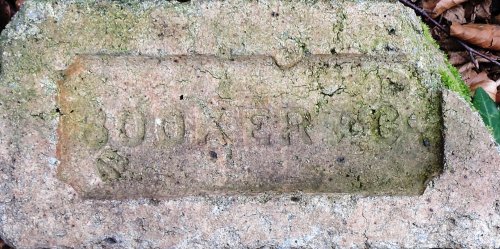
Believed to be related to the Lan colliery/Pentyrch Ironworks. Photo and info by Mike Statham.
Bovil
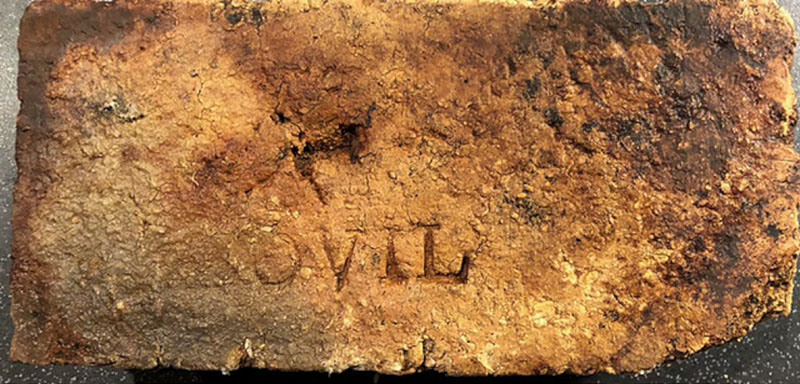
Bovil Brickworks, Machen in the Rhymney Valley. Found by Ben Cottam who lives next to the brickworks site. Photo & info by Phil Jenkins.
Brain & Price, Risca
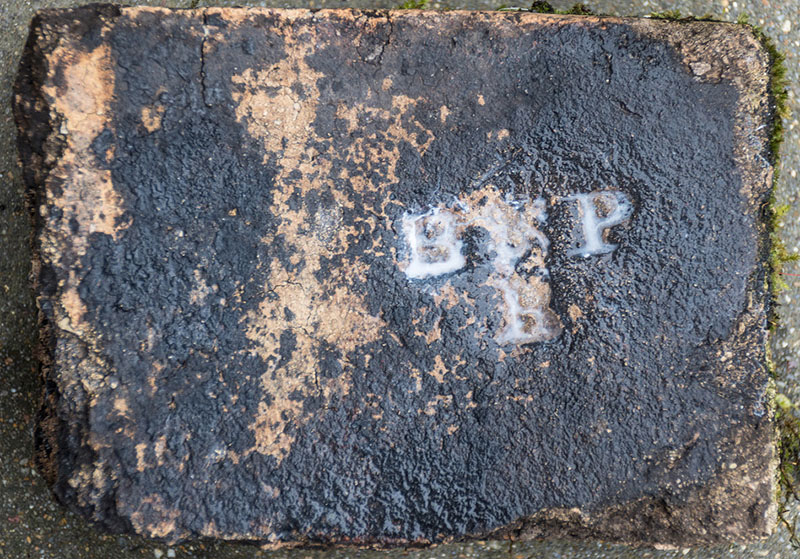
Abraham Brain and Job Price, occupiers of the upper and lower Darren Brickworks, Risca, in 1843. By 1858 the 'Jones' family had taken over and started using all the permutations of 'Darran' and 'Jones' imprints
Brewer
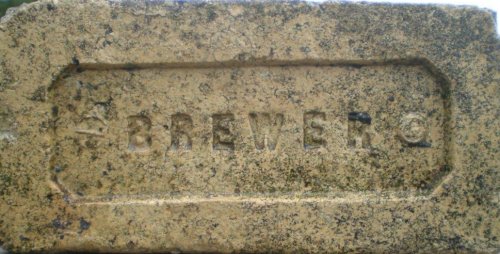
John Brewer (1811 - 1888) lived at Bovil Farm, in Machen,
between Caerphilly and Newport, where, in 1851, he was agent of
the Rumney Railway before it was taken over in 1863 by the
Brecon and Merthyr railway. He acquired the nearby Bovil
Colliery and developed its adjacent brickworks, which seems to
have been a 3-kiln operation, the remnants of which were
obliterated by post-war housing development. In 1877, John
Brewer and his son Samuel sold out to their partners, the Beddoe
family, after which his name was presumably discontinued from
the bricks in favour of 'Machen'. Brewer bricks have the same
design of frog as some earlier Machen ones. The colliery closed
in 1894, so it is likely that the brickworks ceased to operate
at around the same time. The brick was photographed near John
Brewer's residence, the (now ruinous) Bovil Farm. Photo
and information by Richard Paterson.
Bridgend Dinas
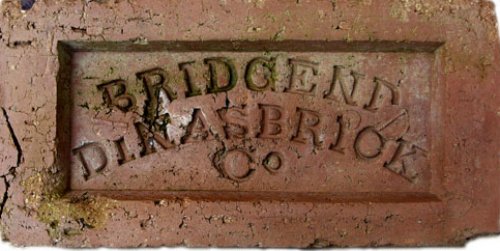
The Bridgend Dinas Brick Co was situated at the tiny hamlet of
Fountain near Aberkenfig in South Wales. The works was in
production for just a few years at the end of the 19th century and
into the early 20th. It was on a site on the opposite side of the
Duffryn Porthcawl railway line to the infamous Parc Slip Colliery
where so many miners lost their lives on August 26, 1892, when a
huge explosion shook the Parc Slip mine; 112 men and boys died
with just 39 survivors: some remained trapped underground for a
week before being rescued. Sixty women were widowed and 153
children left fatherless. The mine closed in 1904. A memorial to
the disaster still stands consisting of 112 stones - one for every
death.

Photos and info by Mike Stokes
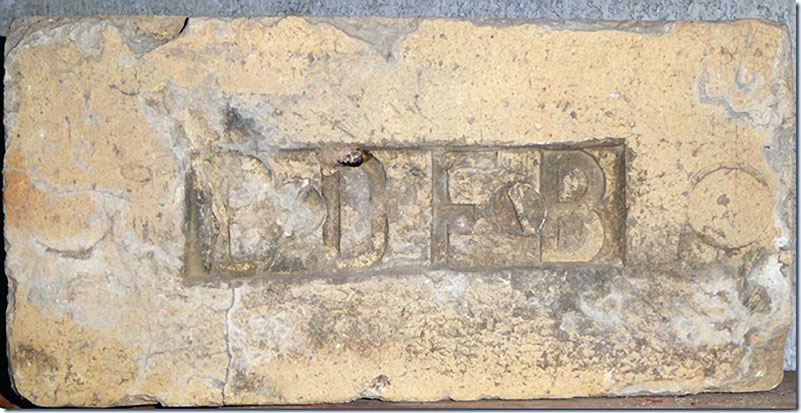
Bridgend Dinas Fire Brick Company, found in Brisbane, Australia. Photo by Frank Hunt
Brynamman - Amman
Bryncethin
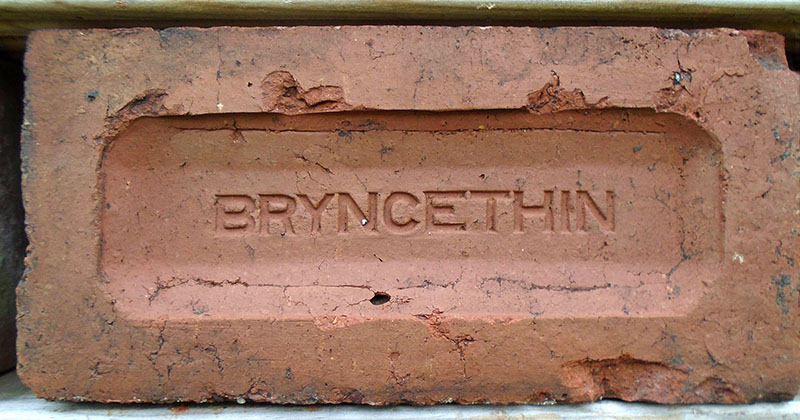
Photo by Richard Paterson.
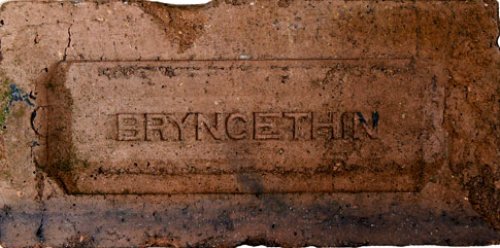
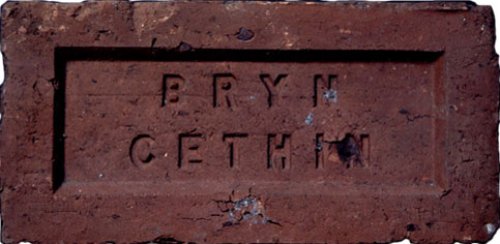
http://www.opobs.co.uk/mainsite/brickworks/byncethinbw.html Photos and info by Mike Stokes
Bryncock
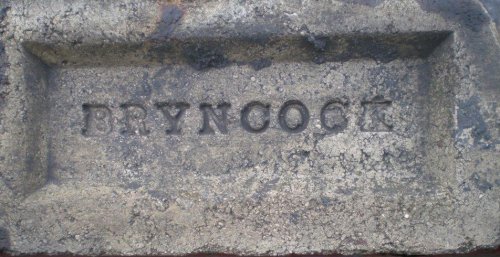
A 'Bryncock' brick from the Bryncoch Brickworks, which was
associated with the colliery of the same name and stood on the
Glamorganshire Canal at Taff's Well, a few miles north of Cardiff.
The works seems to have been in operation between about 1880 and
1910. Photo and info by Richard Paterson.
Brynmenyn
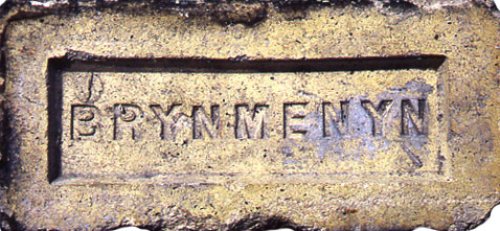
http://www.opobs.co.uk/mainsite/brickworks/brynmenyn.html Photo and info by Mike Stokes.
Burgoyne
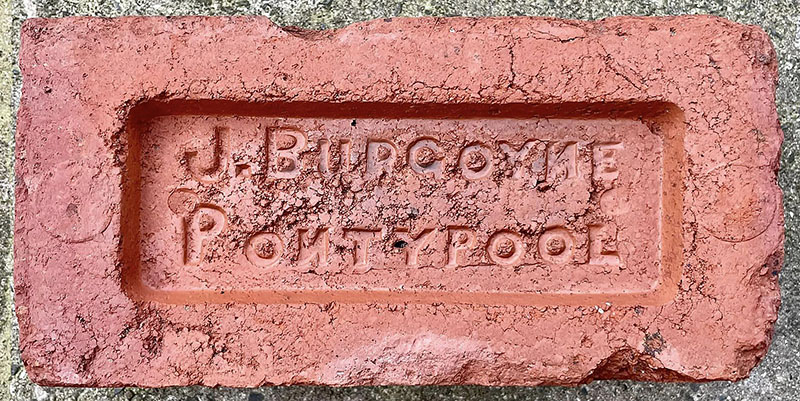
Photo by Phil Burgoyne.
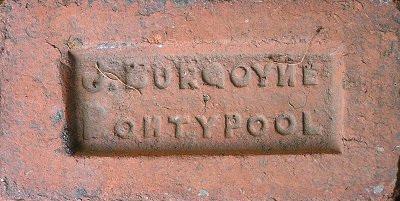
The1881 Census lists John Burgoyne as a brick maker and the
1884, 1891 and 1895 Kelly's list John Burgoyne at the
Little Mill brick kilns. He died in 1906, his estate going
to Alfred Burgoyne and David John Lougher. The latter
apparently took over the works as his name is listed against it
in the 1906 Kelly's.
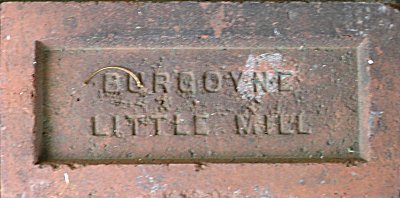
A brick works appears to have been in the Little Mill,
Pontypool area since at least 1850. Some Burgoyne bricks
are stamped "Est. 1850". The site was first referred to as
the Little Mill Brick Co in the 1922 Kelly's Directory.
Once possibly the most prolific of the Eastern Valley (Torfaen)
works, it closed in the 1980s and is now a Go-Kart track.
Thanks to Lawrence Skuse for the info.
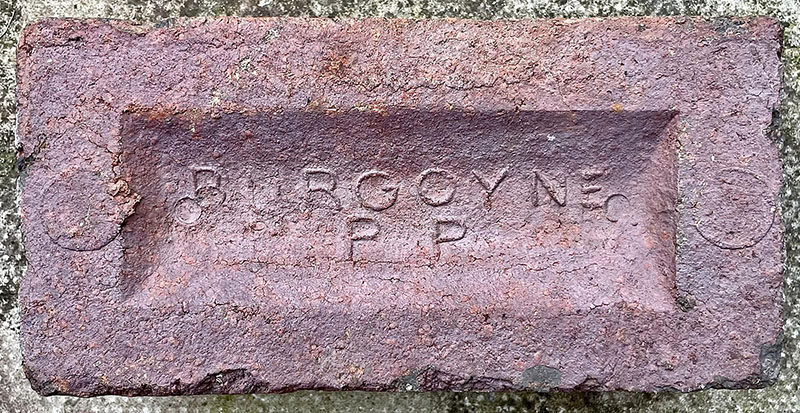
Burgoyne P P, a later product of J Burgoyne's works at
Pontypool, photo by Phil Burgoyne.
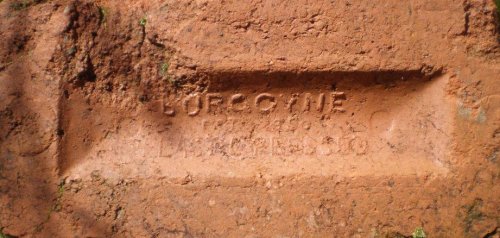
Burgoyne plastic pressed, photo by Richard Paterson.
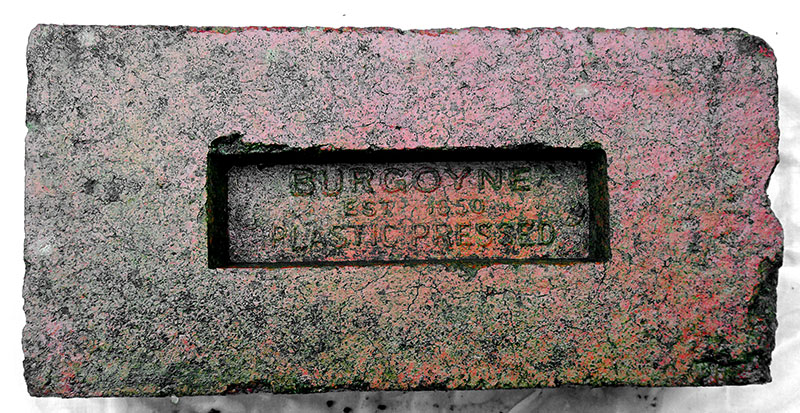
Burgoyne est. 1850 Plastic pressed. From the Lawrence Skuse
collection.
Bute
 front.jpg)
 back.jpg)
Originally the Bute brickworks, this works became part of the
'Duffryn and Llanishen Brick, Tile, Sanitary Pipe and Terra Cotta
Co', also at Aberaman. The works is shown on the 1875 map and was
working in 1891 but has disappeared on the 1901 map.
Photo by Michael Statham and info by the late Mike Stokes.
Buttington
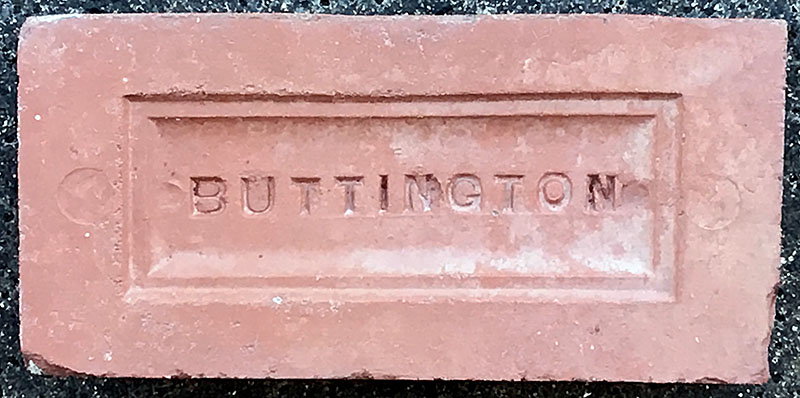
Buttington Brickworks, Buttington, Welshpool. In 1944 the Buttington Brickworks was purchased by the Castle Firebrick Co Ltd. of Elm Works, Northop, Mold and before closure became part of the Butterley Group. Photo by Peter Prest.
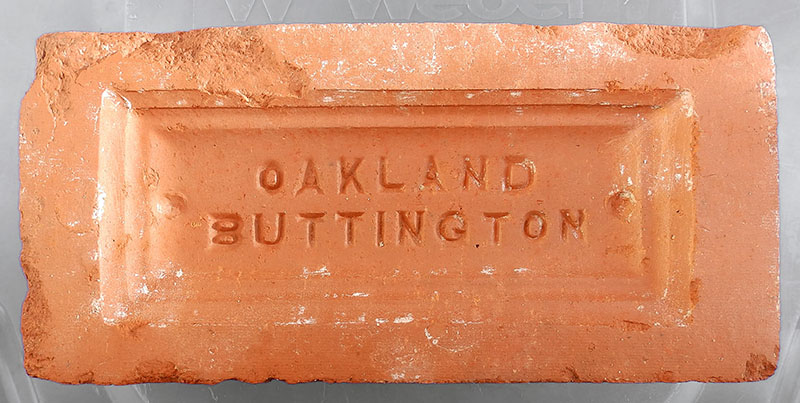
Photo by Nigel Furniss.
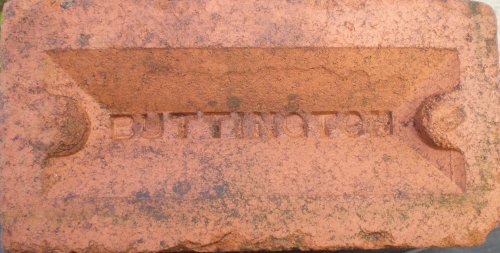
Thanks to Richard Paterson for the photo.
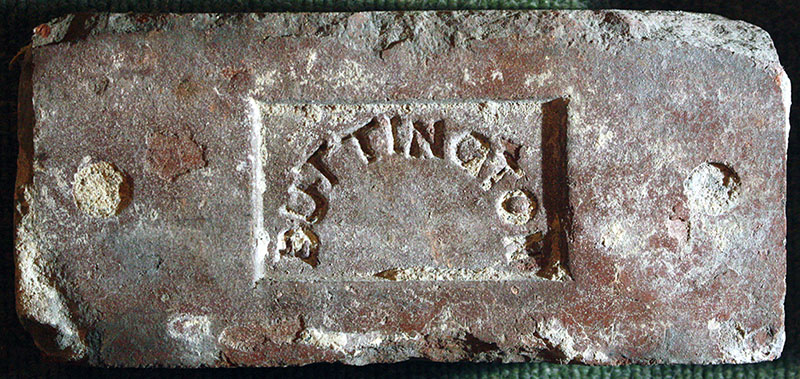
Photo by David Kitching.
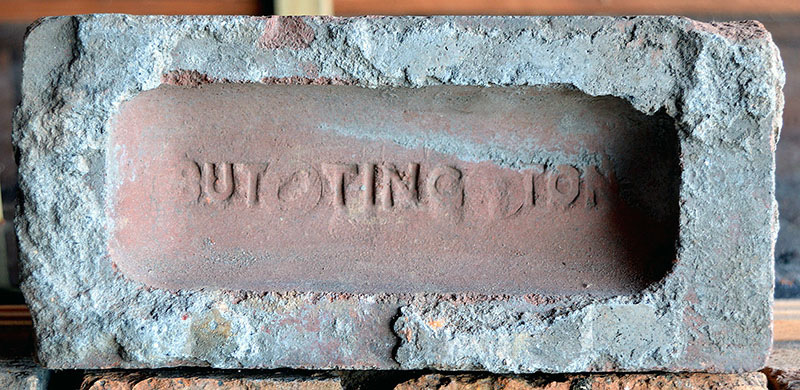
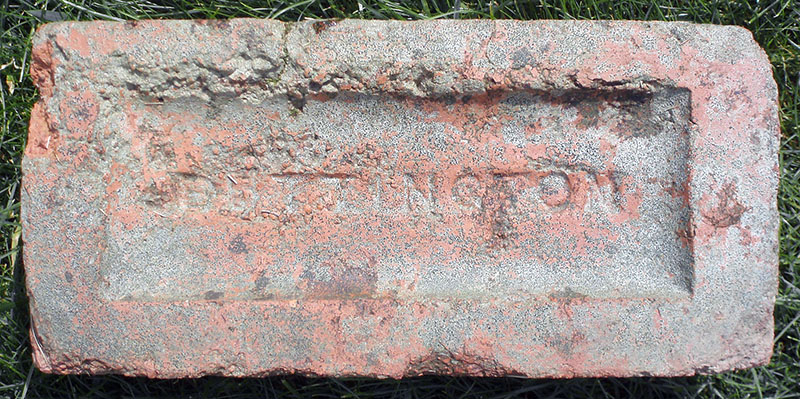
Photos by Frank Lawson.
S H Byass, Cwmavon
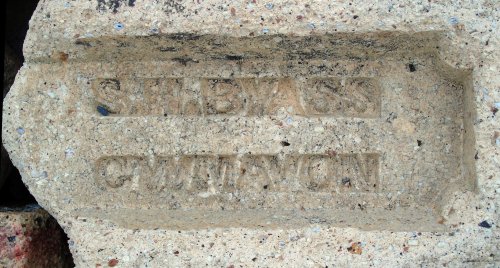
Photo by Gareth Thomas
Letter C
Cae Brick Co, Llanelly
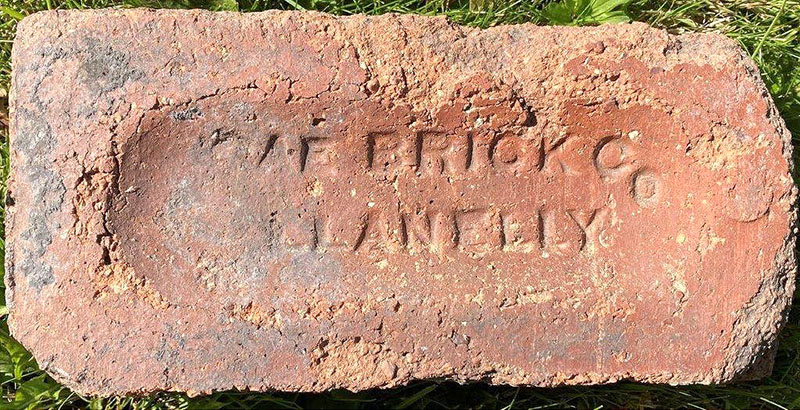
Photo by Richard Evans.
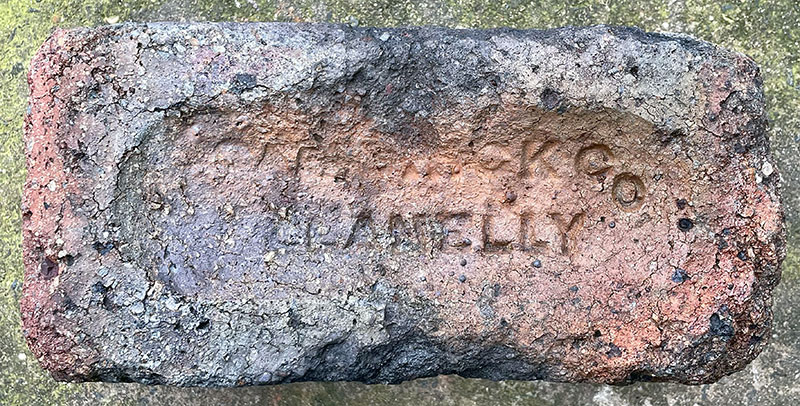
Photo by Phil Burgoyne.
Caerphilly
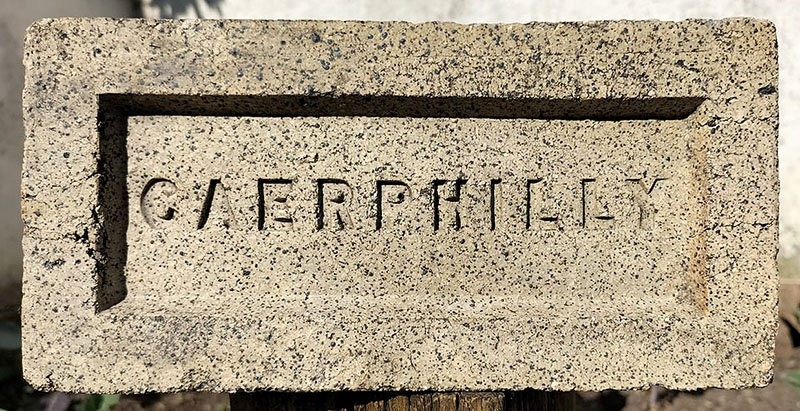
Furnace Blwm brickworks, Caerphilly, Rhymney Valley, Monmouthshire. Photo by Deiniol Iago.
Caerphilly Coal Co
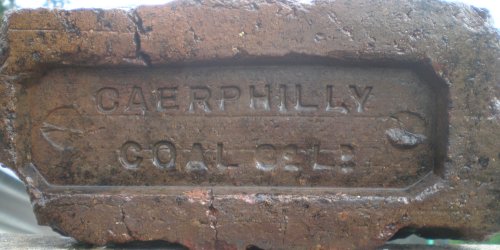
Thanks to Richard Paterson for the contribution.
Cardiff
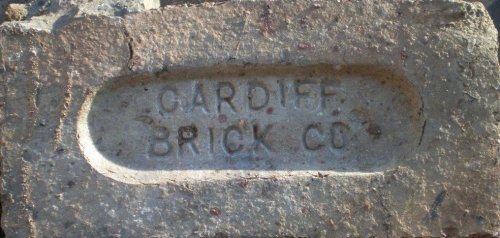
Photo by Richard Paterson
Cardigan
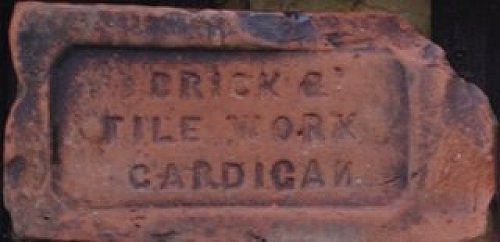
Photo by Mike Stokes
C B - possibly Cwmbran


Found: Near Springvale Adit, Pontnewydd, Cwmbran. A brick
works was opened after the discovery of Stourbridge quality fire
clay seams at the Porthmawr Adit, Upper Cwmbran, opened in
1837. The company changed hands another three times (R
Blewitt, who possibly operated under the name "Cwmbran Fireclay
Co", Henry Parfitt and GKN). The works closed down about
1915. See also: Cwmbran Fireclay Co and Parfit H. It
is possible that "CB" refers to Cwmbran Brick, and is associated
with this brick works, but only about four "CB 1" or "CB 2"
examples have been found overall. There is also a CB 1 brick in a
wall at the top of Upper Cwmbran Road, just below where the
brickworks used to be. Photo and info by Lawrence Skuse.
Cefn Cribbwr
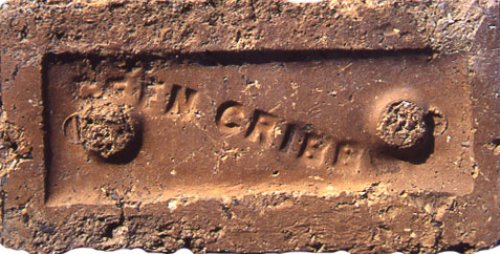
http://www.opobs.co.uk/mainsite/brickworks/cefncribwr.html
Photo and info by Mike Stokes
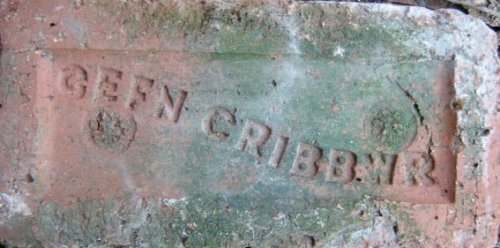
Photo by courtesy of the Richard Symonds collection.
Cemaes Bay
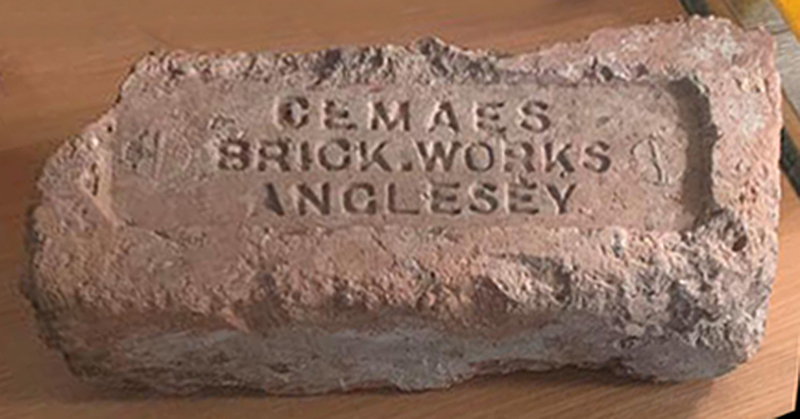
The Cemaes Bay brickworks on Anglesey was opened in 1907 by local landowner Lady Sarah Hughes-Hunter as the demand for bricks grew due to the growth in the tourist industry. It only operated until the beginning of the First Worl War. Photo by Paul Spencer.
More details and images of the kiln and chimney remains can be found here.
Coedely - see NCB Coedely
Church Bay / Porth Swtan
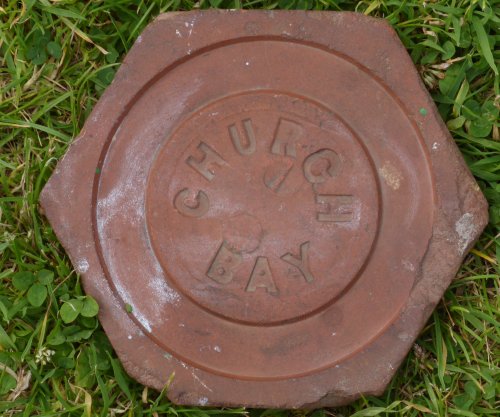
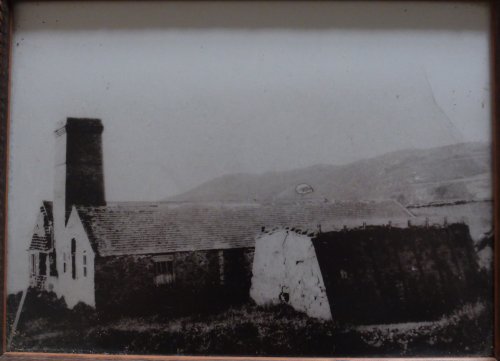
A modern bungalow now stands on the site of this former
brick and tile works which was situated at the end of the road
which goes down to Church Bay (Swtan). Coal for the firing of the
kilns was delivered to the works via barges and ships and then
moved by horse and cart up the slipway from the beach. A local
farmer was employed with his team of horses to bring the coal up
this steep slipway and his payment for delivering the coal was
that he received the last load from each delivery for himself. He
then sold this coal locally at 4 and a half old pennies per cwt.
The works closed in 1908 after only being in production for a few
short years due to the poor quality of the clay. Info and Photo by
Martyn Fretwell courtesy of Swtan Museum where the tile is on
display.
Clyne - see Killay
Clyne Valley
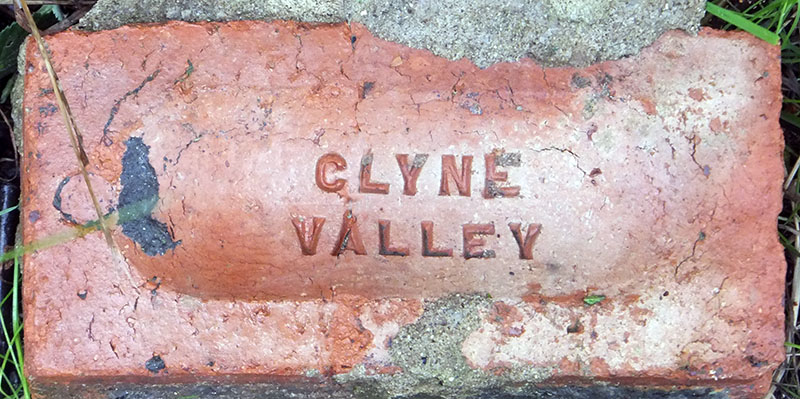
Clyne Valley Brick Co, Swansea. Photo by Phil Jenkins.
Cogan Pill
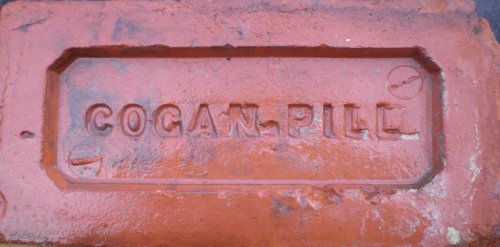
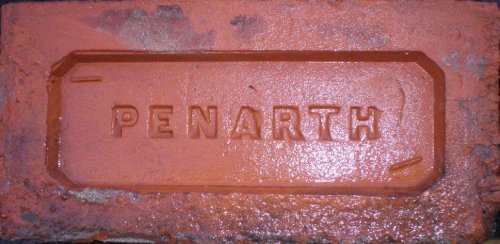
A double-frogged brick from the Cogan Pill brickworks at Penarth,
one of two brickworks originally in the town. Penarth
Leisure Centre now stands on the site of the Cogan Pill
works. Photo and info by Richard Paterson.
Copper Pit
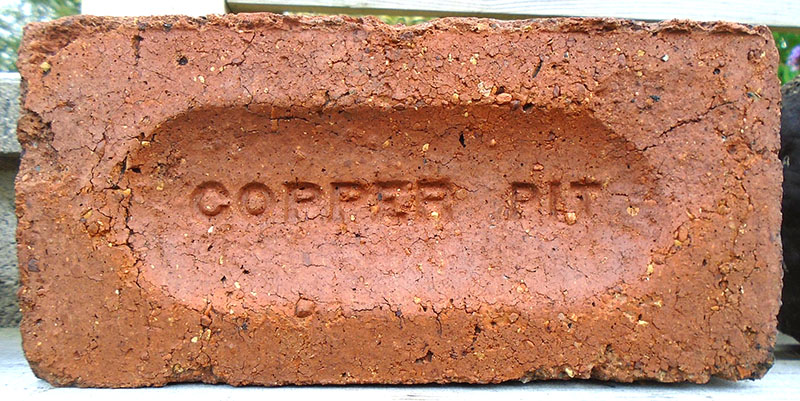
This brick was more than likely made by Copper Pit
Collieries Ltd. in Morriston, Swansea after 1908 when they
re-opened the Copper Pit mine. The Copper Pit Brickworks, Neath
Road, Morriston, Swansea is listed in Kelly's 1923 & 26
editions. Photo & Info by Martyn Fretwell.
Crown Works, Aberdare
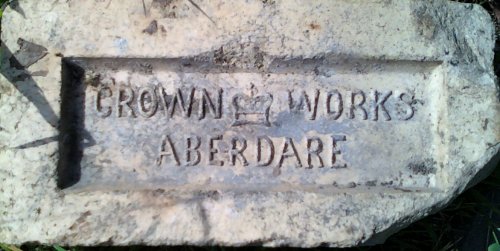
Photo supplied by Brotherglyn.
Cwm Avon Brick Works
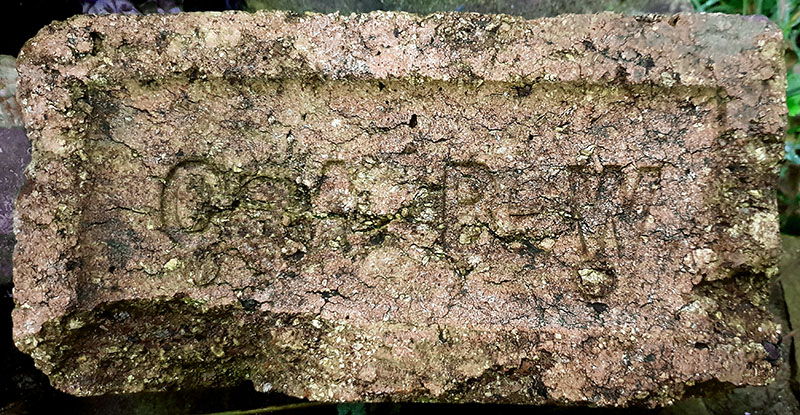
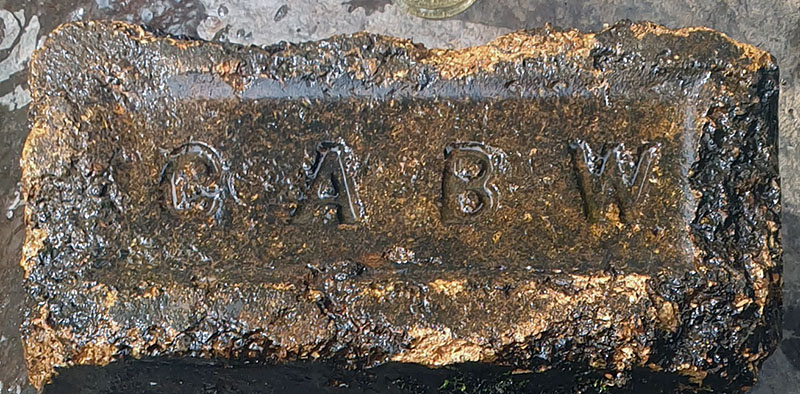
Photos by Claire Adams.
Cwmbran
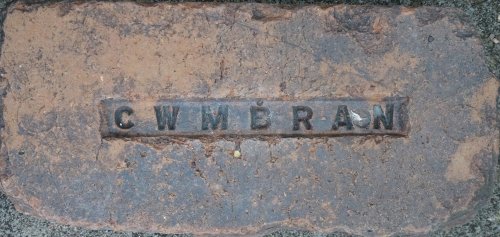
Found at Pontnewydd Golf Club, Cwmbran. Other than
"Cwmbran", unattributable. My feeling is Whitehead as some
of their bricks have "Whitehead" in a similar, very narrow frog
but there is nothing to support this. Photo and info by
Lawrence Skuse.
Cwmbran Brick Co.
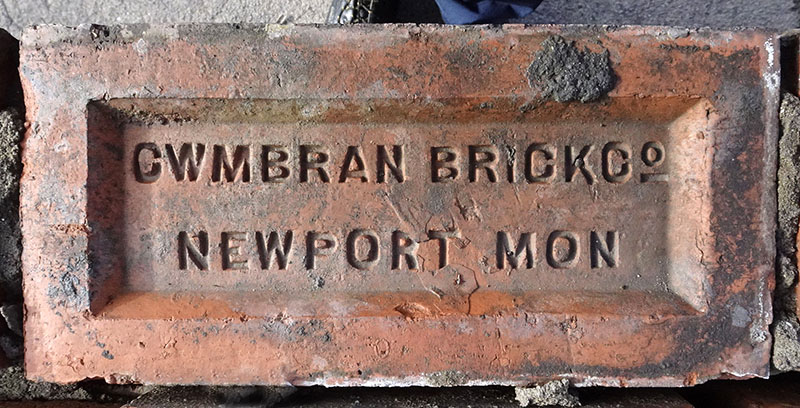
Photo by Lawrence Skuse.
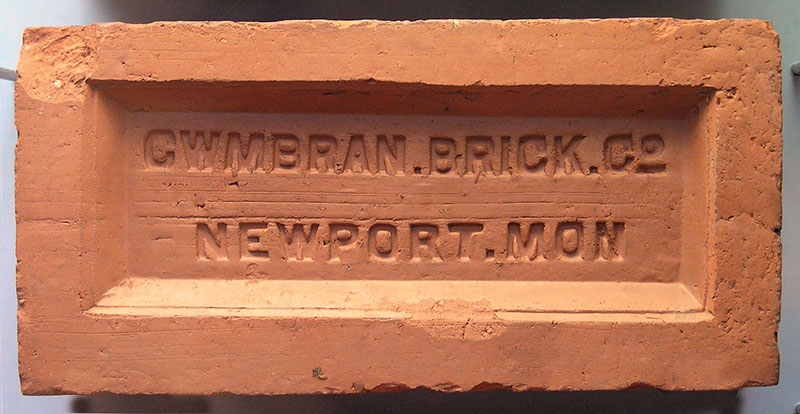
Prior to Cwmbran becoming well known as a New Town, references
to Cwmbran were always followed by Newport in order to establish
where it was. The brick works was located in Oakfield near to
Cwmbran Stadium but Kelly's of 1895 and 1906 also list the
company as at Llantarnam Road, Cwmbran (this is also given as
the location for the Star Brick and Tile Co Ltd). The company
was, anecdotally, still operating in 1958 - thanks to
Lawrence Skuse for the info.
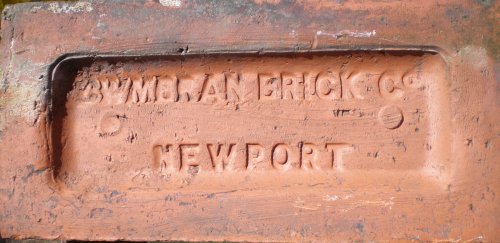
Photo by Richard Paterson.
Cwm Bran Fireclay Co.
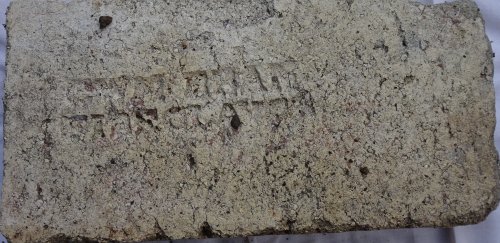
Found at the pump and filtration station, known locally as 'The
Water House', for the nearby Blaen Bran Reservoir in Upper
Cwmbran. This was the site of the former works. Photo
and info by Lawrence Skuse. further info on this website.
Cwmdu
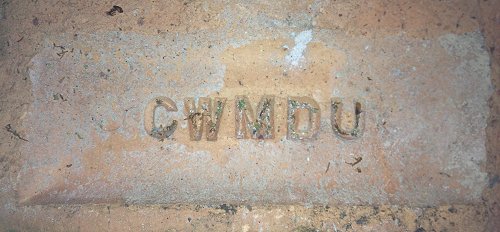
Photo by Geraint Daniels
Cwmgorse
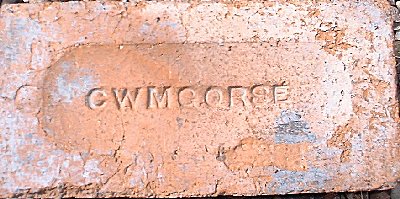
Made by the Cwmgorse Brick Co in, what is now, West Glamorgan.
Cyfarthfa
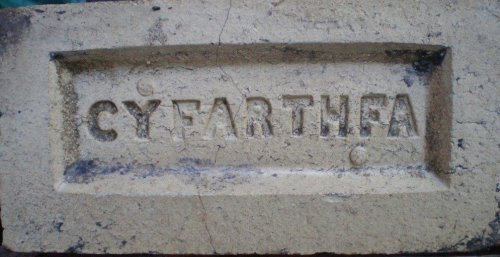
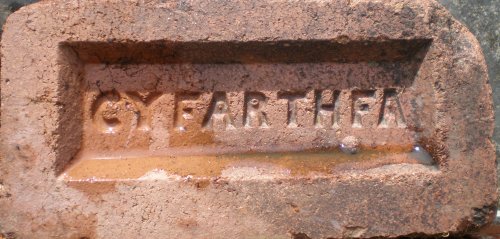
The Cyfarthfa Brickworks stood on the historic Cyfarthfa Ironworks
site in Merthyr Tydfil, photos by Richard Paterson.
Cynghordy Metallic
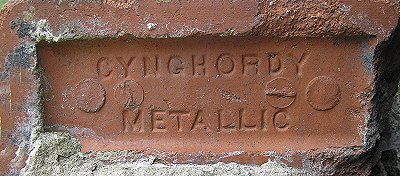
Cynghordy is a small village in Carmarthenshire.
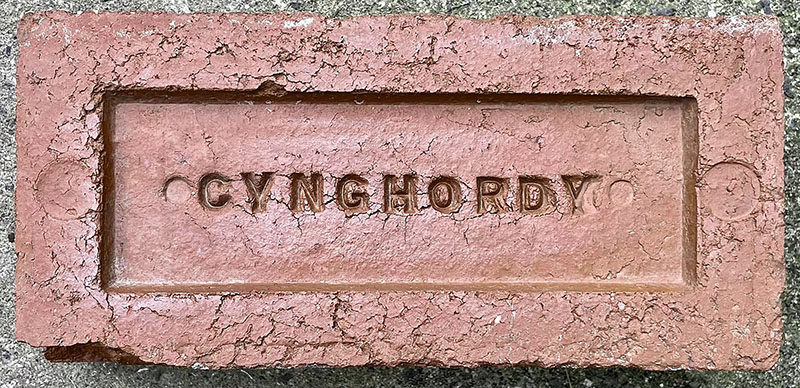
Photo by Phil Burgoyne.


































.jpg)


























 front.jpg)
 back.jpg)





































